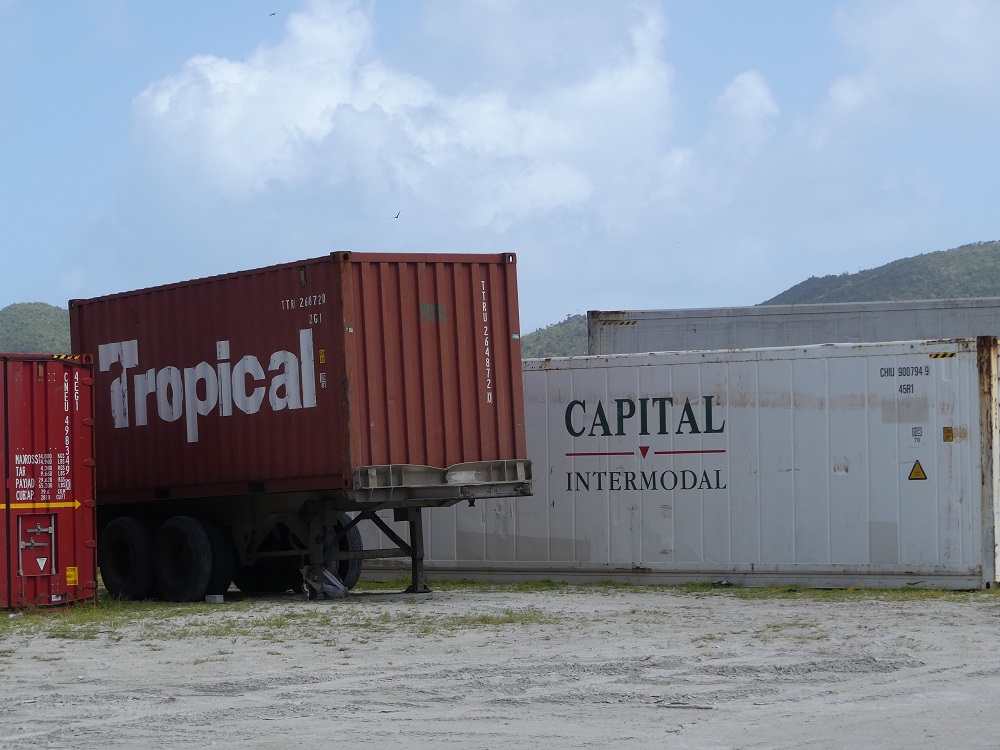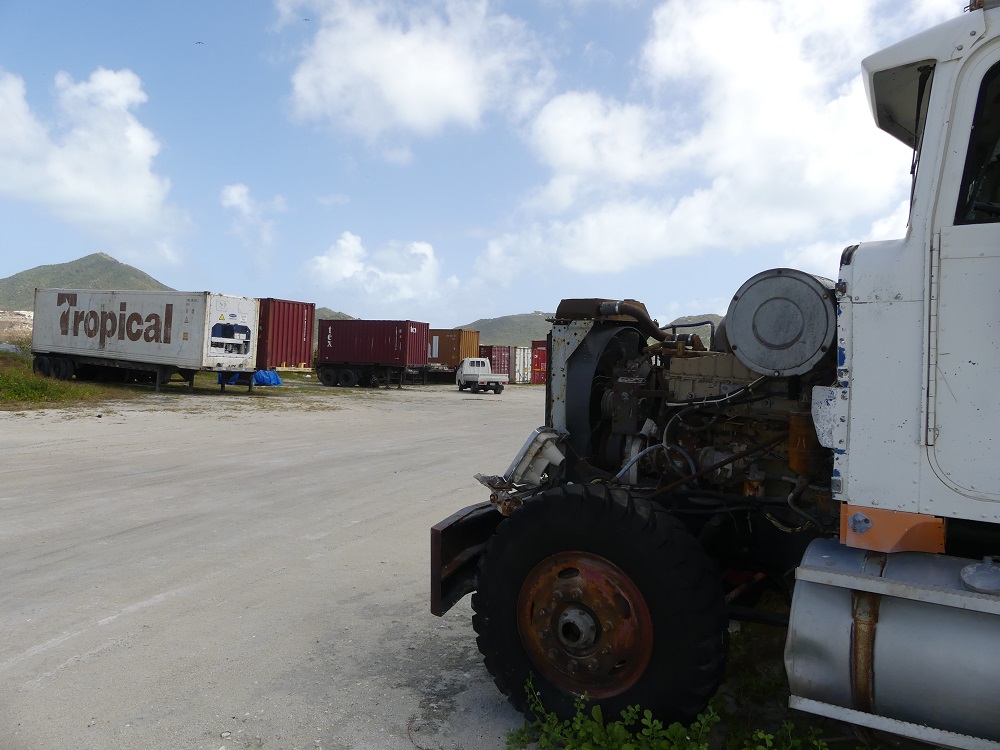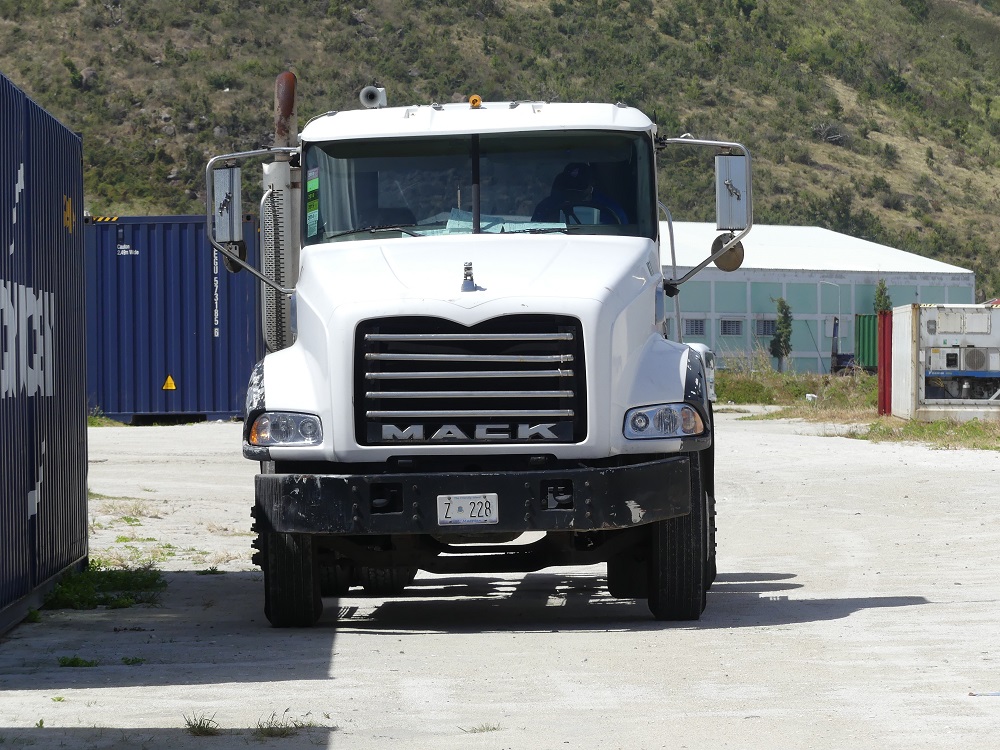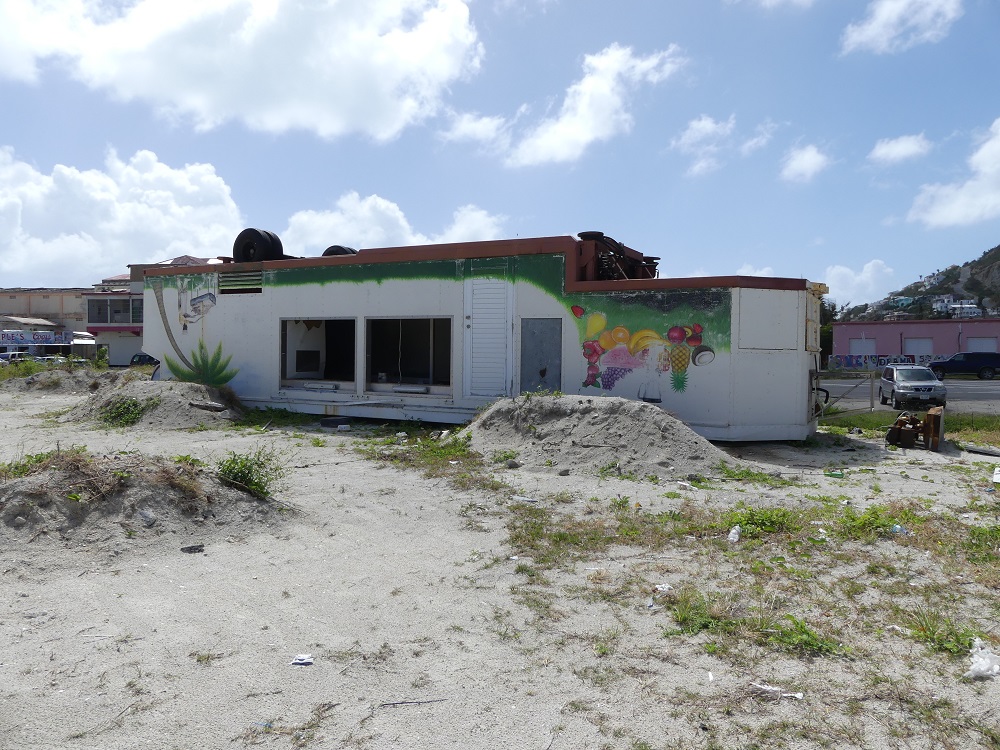Advertisement

PHILIPSBURG –The concept of a ring road first became an issue in May 2009, when the section ROB of what was then the VROM (Public Housing, Urban Planning and Environment) department published a notice announcing its plans to fill in part of the Great Salt Pond for the construction of a ring road. Eight years later, the ring road still has not become a reality, but the pond has lost a significant part of its retention capacity.
The grounds are now used in part as a public parking area, but the VROMI-ministry has always been keen on prohibiting the parking of for instance boats and trailers on the land.
Maybe this is a post-Irma effect, but currently a lot of the land has turned into a dump site for sea containers. On Monday, there were close to fifty containers (46, to be exact) parked on what is commonly called the ring road (even though the ring road does not exist).
The containers are from a variety of sources. There are Tropical containers, others are from Capital Intermodal; there is even an upside down food truck resting on the land. On Monday, there was a truck built to transport containers (license plate V 228) on the ring road. So far, the VROMI-ministry has not taken any action, thereby suggesting that it is okay to turn the place into a new on-land container terminal.
The story of the ring road begins in 2009, when VROM – popularly known as the department of public works – announces that it has plans to fill in part of the Great Salt Pond for the construction of a ring road.
Environmentalists, represented at the time in the St. Maarten Pride Foundation and EPIC (Environmental Protection in the Caribbean) – filed objections against the plan but to no avail. The government goes ahead with dumping sand harvested from the port into the Great Salt Pond.
Pride warned that this would reduce the retention capacity of the pond and that this would have dire consequences after heavy rainfall.
Before the government dumped all that sand in the pond, its water storage capacity was 132.1 hectare, according to a report from Lievense Consulting. The same report put the minimum required retention capacity at 109 hectare. By filling in part of the pond, the island government reduced the retention capacity to just above that absolute minimum: 110.4 hectare.
When Hurricane Otto caused bad weather in St. Maarten on October 10, 2010, the Pride Foundation was quick to point out that “the filling-in of the Great Salt Pond for the construction of the ring road significantly contributed to the extent of flooding in the Greater Great Bay area.”
Those who expected the government to execute the project in a decisive manner were sorely disappointed; there was never enough money in the budget to complete the ring road.
In December 2009, while contractors were dumping sand in the Great Salt Pond, it became clear that there would be no money in the 2010 budget to complete the project. Financing depended on the establishment of a road fund – a pet project of then Commissioner of Public Works, Theo Heyliger. But the Executive Council of the Island Territory did not take any steps to establish this fund in the face of doubts expressed by financial supervisor Cft that warned that the fund would put part of the national budget beyond democratic control.
In April 2010, Heyliger told the Today Newspaper that the ring road project would require 22 million guilders ($12.2 million) to complete, while his annual budget for roads was just 2 million guilders.
In January 2016, then VROMI-Minister Angel Meyers presented the plans of his ministry for the period 2015-2018. One of the topics: an investment of 12 million guilders in the hard-surfacing of the first phase of the ring road in 2018.
But after Hurricane Irma, all bets are off and the ring road threatens to become just another project that began with good intentions without wondering where the money was to execute it.
Above photo caption: Containers from Tropical and Capital Intermodal are among the steel monsters on the ring road. Photo Hilbert Haar.

Above photo caption: The ring road has become a dump-site for sea containers. Photo Hilbert Haar.

Photo caption: This truck was parked next to some containers on the ring road on Monday afternoon. Photo Hilbert Haar.

Photo caption: An upside down abandoned food truck – courtesy of Hurricane Irma – rests in peace on the ring road. Photo Hilbert Haar.




